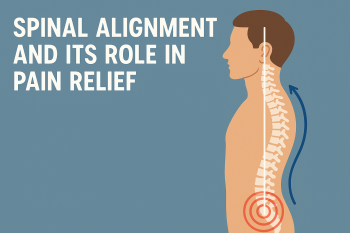
There’s an itch some folks get on their arms—intense, relentless, usually right over the biceps or forearms. You scratch, rub, maybe even try ice packs in desperation, but relief is always temporary. Sound familiar? For a lot of people, especially those who’ve had neck problems, head injuries, or even just a history of rough-and-tumble sports, this burning, tingling itch is more than just a nuisance. It has a name: Brachioradial pruritus.
Neck Troubles: The Hidden Trigger
Here’s where things get interesting. Over the last decade, studies and countless case reports have kept circling back to one culprit: the cervical spine. The nerves that branch out from the neck—specifically the C5-C6 region—travel down to those itchy patches of skin. If the nerves are pinched, inflamed, or just “cranky” from an old whiplash or a bulging disc, the signals they send to your brain can get garbled. Instead of “all clear,” they send “itch, burn, tingle.”
Recent MRI studies (Journal of the American Academy of Dermatology, 2024) confirm that a significant number of people with brachioradial pruritus have either degenerative changes in the cervical spine or a history of trauma. Sun exposure doesn’t help, but the neck connection is no longer just a fringe theory—it’s mainstream.
Can Upper Cervical Care Help?
Let’s address the question straight: Is there solid evidence that upper cervical chiropractic care fixes brachioradial pruritus? Short answer: it depends who you ask.
A 2021 case series in Chiropractic & Manual Therapies reported several patients with chronic arm itching and confirmed cervical spine issues who improved after precise spinal adjustments. Their itch faded, sometimes dramatically. There’s also a small 2023 pilot study from Spain showing measurable symptom improvement following targeted physiotherapy and spinal mobilization. However, these aren’t gold-standard, double-blind trials—yet.
What’s clear is that for some patients, restoring better movement and alignment in the neck seems to dial down the nerve irritation. It isn’t a magic bullet. Sometimes it takes months; sometimes only a few sessions. For others, it’s just one piece of the puzzle (along with physical therapy, nerve medications, or even topical anesthetics). But, yes—people who never expected their itch to improve after seeing a neck specialist have reported real relief.
What Actually Happens During Upper Cervical Care?
Upper cervical chiropractors focus almost obsessively on the top two vertebrae—the atlas (C1) and axis (C2). These bones do the heavy lifting, balancing your 10-12 pound skull on a joint about the size of a donut. If there’s an old injury or misalignment here, everything downstream can go sideways. (Anyone who’s woken up with a kinked neck and a numb hand gets this.)
Assessment isn’t just “cracking” your neck. There are neurological tests, sometimes 3D imaging, and a long look at your posture and head tilt. Corrections, if needed, are gentle—often little more than a precise push or tap in the right place. After that, it’s a process of re-checking and adjusting only if things slip out of alignment again.
The idea is simple: correct the problem, let the nerves calm down, and then… see what happens. Some people heal fast; others take time. A few notice extra “bonuses”—better sleep, fewer headaches, improved balance. Not every story is a miracle, but enough patients have experienced relief from brachioradial pruritus (and had their results documented) that it’s moved out of the realm of coincidence.
Takeaways: Is It Worth Exploring?
If you’re dealing with persistent, mysterious arm itch—especially if you have a history of neck pain, injuries, or even a stiff upper back—it might be worth asking your doctor for a cervical spine checkup. A plain MRI can sometimes spot obvious nerve pinching. And while there’s no universal cure, upper cervical chiropractic is one avenue with growing evidence, at least for certain people.
This isn’t about selling magic or overpromising. Sometimes the itch is caused by sun, sometimes nerves, sometimes… who knows? But the neck-arm connection is real, and new research keeps surfacing. For those stuck in the “itch that won’t quit” cycle, a careful look at the spine might just be the missing piece.
If you’re reading this while scratching your arm, maybe take a break, stretch your neck, and if you’re curious—consider talking to a professional who understands the upper cervical spine. The science isn’t all in, but the stories are real, and sometimes, that’s where real breakthroughs begin.





Leave a comment